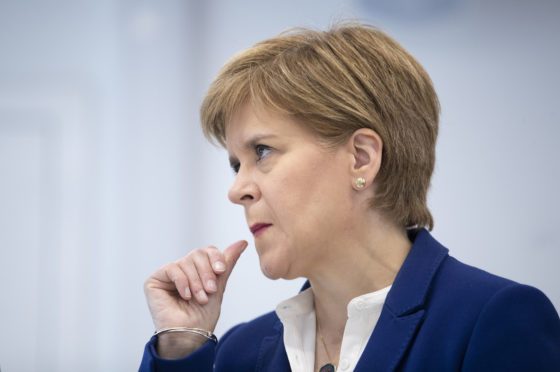
The last week has brought events that I have never witnessed before in all my time in politics – and, it must be said, events that I never thought I would see.
The spectacle of a British Prime Minister attempting to shut down parliament at a time of national crisis to railroad through the most divisive and potentially damaging peacetime policy arguably in living memory is one to chill the blood.
Boris Johnson’s bid to prorogue the House of Commons as he tries to run down the clock to a no-deal Brexit is not the behaviour of a democrat.
It is, as I remarked a few days ago, something more akin to the actions of a tin-pot dictator.
That is not hyperbole – the Prime Minister’s actions are utterly unprecedented in modern times. His behaviour is an affront to democracy, with one prominent newspaper editorial stating that, if he were to go further, as some reports have said, and refuse to resign if he lost a vote of no confidence, it would suggest that the UK now has a “despot in Downing Street”.
The immediate priority now is for all those of us who are opposed to a no-deal Brexit, and the looming catastrophe it threatens for jobs and living standards, to work together to try to prevent it.
The Scottish Government and the SNP will be at the forefront of these moves in the days and weeks ahead.
What makes Boris Johnson’s actions all the more outrageous is that he is attempting to ram through something that absolutely no one has voted for.
A no-deal Brexit of the kind we are now hurtling towards was not on the ballot paper in 2016.
All we had was a choice to leave or remain in the EU – with Mr Johnson’s infamous boast of an extra £350 million a week for the NHS plastered on the side of a bus.
No one voted for chaos at ports and airports, delays for travellers, possible shortages of food and medicine – or a return to a hard border in Ireland with all the dangers that entails.
But all of these things are threatened by the no-deal Brexit that Johnson – who has not been elected by anybody other than a tiny number of Tory party members and his cabal of right-wingers – is trying to engineer.
Quite simply, they have no mandate to do so and everything possible must be done to try to stop them.
Brexit was supposedly about returning control to the House of Commons – not shutting it down.
What a contrast with the Scottish Parliament, which this week resumes after the summer recess, when we will publish our new Programme for Government.
Holyrood resumes following the resignation of Ruth Davidson on Thursday.
On a personal level I wish her well for the future, but there is no escaping the fact that, while family reasons were undoubtedly a major part of her considerations, she has decided to quit after concluding that she could no longer tolerate a Boris Johnson-led Government.
And that begs the basic question – if even Ruth Davidson is no longer prepared to put up with the extreme and damaging agenda the UK Tories are now pursuing, then why on earth should the people of Scotland be expected to do so?
There are now renewed suggestions the Scottish Tories will seek to distance themselves from the increasingly toxic brand of their Westminster bosses, to form an independent party in Scotland.
Again, the hypocrisy is massive. The situation is so bad that independence, it seems, is needed for the Scottish Tories, who simultaneously insist that giving the people of Scotland that same choice should be blocked.
That is an unsustainable position, of course. Support for independence – and for holding an independence referendum – is surging all across Scotland, and the events of the past week are only likely to see that trend increase.
On our return to parliament, the Scottish Government will continue to take forward the Bill that paves the way for a fresh referendum.
I understand the frustrations that many of those who support independence feel in terms of the stance taken by the UK Government on the referendum issue.
But, amid the chaos, confusion and anti-democratic behaviour at Westminster, it is more important than ever that the Scottish Government continues to act in a calm, considered and consensual way.
That is the approach I am committed to, and it is one I am determined to ensure leads to the people of Scotland having their say on our shared future.

Enjoy the convenience of having The Sunday Post delivered as a digital ePaper straight to your smartphone, tablet or computer.
Subscribe for only £5.49 a month and enjoy all the benefits of the printed paper as a digital replica.
Subscribe